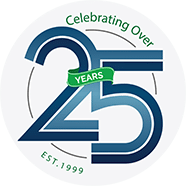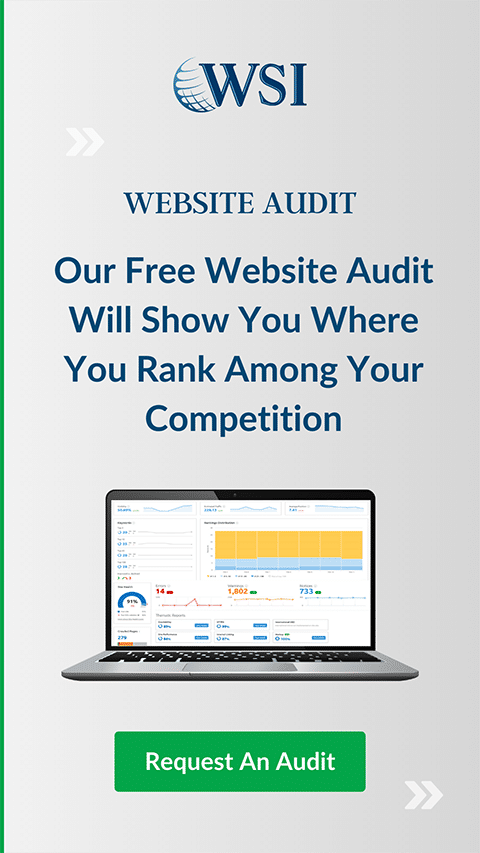
Summary: There is an art to getting your site displayed on Google’s first page, and it isn’t easy. Learning how to improve and optimize your website will help.
Now that most of us have internet-connected devices in our pockets at all times, Google has become many people’s primary source of information, with over 3.5 billion searches per day. As a result, however, Google’s search results have also become a very crowded environment.
With so many businesses vying for prominence on this search engine, it is difficult to land your company website on Google’s first page. Successfully getting there requires a combination of art, knowledge, and technology.
Why is the First Page of Google So Important?
When some Google searches provide dozens of pages of results, getting your website to appear on the second or third page might seem good enough. However, there are three good reasons to focus on the first page specifically. First-page Google results enjoy:
- Outstanding Click-Through Rates. The click-through rate, or CTR, measures the percentage of people who click on the link to your website when they see it. The first five organic results have a CTR that ranges from 7.5% to 34%. From the second page onwards, though, the CTR could fall to 0.5% or lower. The higher you rank, the higher you can expect your CTR to be.
- Excellent Exposure. Google’s Snippet feature displays chunks of text from top-ranking websites right at the top of the search results page. If your website is featured in this prominent spot, it will be impossible for searchers to miss. Your site will also immediately gain more credibility since the placement implies it has authoritative and reliable information.
- Higher Traffic. Website traffic refers to the number of visitors a site receives. The sites on the first page of Google’s results receive 71% of all search traffic on this engine, so securing a high rank will also win you more page visits.
How Does First-Page Ranking Benefit Your Business?
Not sure how the impact described above translates into tangible benefits for your business? Getting your site onto Google’s first page:
- Improves Your Visibility. First-page websites get seen by exponentially more people than sites that don’t make it to this position.
- Generates More Quality Leads. Users who search for something specific often have a high purchase intent. If you can rank well for the search terms these people use, you can lure sales-ready leads to your site and convert them quickly.
- Increases Engagement. Google displays a wealth of information on top-ranked business websites, including store hours, a map of your location, and additional information under the ‘People Also Ask‘ section. This gives people many other ways to engage with your brand right on the search results page.
- Boosts Website Traffic. Higher traffic is a highly desirable development for your business. The more users visit your site, the more chances you will have to convert them into paying customers.
- Increases Your Industry Authority. Google reserves its top ranks for sites that it considers to be authoritative sources full of reliable information. If you can get your website to rank well, it will be perceived as a significant touchpoint for news, data, and commentary related to your industry.
- Builds Consumer Trust. Google’s algorithms are designed to weed out low-quality spam sites on behalf of users. Getting your website on the first page will prove to consumers that your business is legitimate and trustworthy.
- Builds Your Audience. Getting to the first page of Google results requires plenty of high-quality evergreen content. This type of content is timeless and always relevant to users, so you can expect to see consistently high traffic growth alongside the growth of your archives.
- Accelerates Your Sales Cycle. Users who visit your site looking for quality information have already entered the top portion of your sales funnel. Now that they have had this initial contact with your business, you can target them with tailored content to move them further down the funnel and eventually convince them to make a purchase.
Using Your Website to Work Toward Top Ranks

Your website is your number-one tool to reach higher Google search placements. The process of fine-tuning your website to Google’s ranking requirements is called search engine optimization, or SEO.
SEO is usually not done on a site-wide basis. Instead, the focus is placed on optimizing each page over time. The pages on your site can be tweaked to rank well individually, which will then contribute to your site’s overall authority and reputation on Google. To do this:
Choose Your Keywords
Keywords are the words or phrases that make up the search queries you want to rank for. Your website should target a wide range of keywords that are relevant to your industry, products, or brand. Each page should have its own list of target keywords to avoid having multiple pages competing against each other. Using a keyword research tool or speaking with an SEO company can help to identify high-volume, low-competition keywords. These are the ones that will give you the best chances to reach a high rank.
Tell Google What Your Keywords Are
Google will better understand your SEO approach if you use specific technical tags to tell it more about your keyword strategy. The keywords should appear in:
- Your Meta Tags. Your meta title (the title displayed both at the top of your page and the top of the search result for your website) and your meta description (the summary that appears below a page’s title in the search results) should showcase the primary keyword for each page.
- Your URL. Incorporating keywords into your URL not only helps Google understand what your website is about but also signals to users that your site is straightforward and trustworthy.
- Your Alt Tags. Alt tags, or alternative text for images, let Google understand the visual content of your site. The search engine cannot factor your site’s images into its ranking algorithm without these written descriptions. These tags are also useful for users with disabilities who cannot see or process the pictures.
Write for Human Readers
The ultimate purpose behind Google’s search ranking system is to get relevant information to human users as quickly and efficiently as possible. Your website will only rank well if you offer readers high-quality information that is informative and highly relevant that interests them. Share your in-depth knowledge about your industry, and opportunities to incorporate keywords will come naturally.
Emphasize Your Location
One of the main reasons people use Google is to find shops, eateries, and other businesses in their local area. Be sure to mention the city (or cities) in which your company operates so your website shows up in searches for users in your geographic area.
Optimize Your Site for Mobile Browsing
Since most searches are now performed on smartphones and tablets, Google uses mobile-first indexing to determine its search ranks. Mobile-friendly design is an absolute must for a high-ranking website. Responsive design allows you to accommodate browsing on any device, regardless of screen size, easily. You can also create a separate mobile-optimized version of your site if you would like to.
Focus on Creating an Excellent User Experience
Along with mobile optimization, you should also create a stellar user experience in other ways. Your website’s design should be distinct and engaging, easy to navigate, and incorporate clear calls to action to help users find what they were looking for on your page. These measures will keep users on your site for longer, which signals to Google that your site is useful and deserves a high rank.
Improve Your Core Web Vitals
Core Web Vitals are part of Google’s user experience metrics introduced in 2021. They measure three specific areas of your site: Largest Contentful Paint, First Input Delay, and Cumulative Layout Shift. Understanding why these factors matter and how you can improve your scores will help boost your SEO results.
Get an Extra Boost by Optimizing Your Listings
Online business directories can significantly improve your website’s search ranks and drive more organic traffic to your business. Here is how to make the most of this opportunity.
Create a Google My Business Profile
Google My Business, or GMB, is an excellent tool for local businesses to promote themselves online. Claim and verify your business’ profile to get started using this versatile platform.
Optimize your GMB Profile
An optimized GMB profile will show up on many more searches than a bare-bones one. It will also give users a much better impression of your business. To make your profile look its best:
- Complete all fields in your listing. The more information you provide, the better.
- Keep your NAP consistent. Your NAP is your business name, address, and phone number. Be sure to use the exact same information for your business every time it is called for with no abbreviations or shorthand. This helps Google and your visitors understand that all of this data belongs to the same company.
- Update your information as needed. If your business keeps different holiday hours or changes its phone number, be sure to note these changes on your GMB listing.
- Upload photos. Photographs of your business help round out your listing and give leads a better idea of what to expect when they visit you.
Create New Listings on Other Platforms
Google My Business is the biggest and most relevant directory, but there are plenty of others that you can use as well. Some are generalized, such as Yelp, while others are specific to certain industries like HomeAdvisor. List your business on as many of them as you can, using information that is consistent with your GMB profile each time.
Collect Customer Reviews
Reviews from real customers are powerful proof of your business’ appeal. Encourage your customers to leave you a review on Google My Business, Yelp, Facebook, Trustpilot, or any number of other sites where your business is listed. To do this, consider offering a small incentive like a discount on their next purchase.
Use Paid Google Advertising for a Stronger Start
All of these methods will take you a few steps closer to becoming a first-page website, but there is a catch: this will not happen overnight. Achieving high search ranks organically takes time, often demanding months of input before you see results. The many benefits of first-page rankings mean this endeavour is still worth the effort, but what do you do when you need more immediate improvements?
Pay-per-click ads, or PPC ads, offer a convenient solution to this problem. These ads appear at the top of Google’s search results pages for specific keywords. Then, every time a user clicks on one, the company that placed the ad pays a small fee to Google for the ad placement.
Google ad placements must be carefully chosen to ensure they are cost-effective and face little competition for the handful of top positions. It is good to use a professional ad agency, like WSI Comandix, if you want to employ this strategy to promote your company’s website.
Take Your Business to the Top with Our Outstanding SEO Services
With some work, some time, and a winning strategy, your website will eventually make it into Google’s first-page results. You can speed up this process considerably by contracting digital marketing services from a leading SEO company.
WSI Comandix has assisted a diverse range of companies across the GTA to achieve higher ranks on Google’s search pages. We put our expert strategies and extensive digital marketing skillsets to work for our clients to get them the SEO results they want. Contact us for more details on how we can help you gain more exposure on the world’s most popular search engine.
Also Read:
Don't stop the learning now!
Here are some other blog posts you may be interested in.
VIEW ALL BLOG POSTS-
The Advantages of an SEO Agency Compared to an In-House Team
When it comes to search engine optimization (SEO), every company has one significant decision. They can either …
READ MORE -
Insider Tips: What SEO Agencies Wish Every Client Knew
In the rapidly evolving world of digital marketing, Search Engine Optimization (SEO) continues to be the cornerstone for businesses aiming …
READ MORE -
15 Benefits of SEO You Need to Know for Your Business
Hiring a search engine optimization company to help you with your website’s SEO might be the single best…
READ MORE









